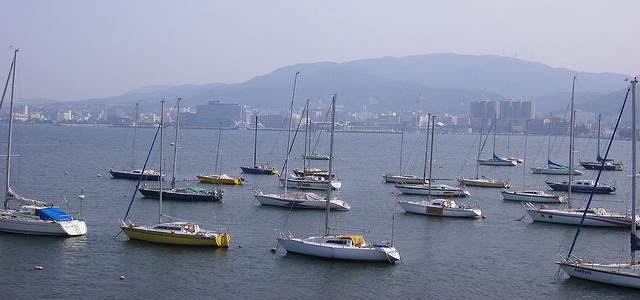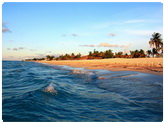| Quick Facts: | Lake Miwa |
|---|---|
| Countries: | Japan |
| Area: | 676 km² (261 mi²) |
| Avg. Depth: | 43 m |
| Max. Depth: | 103.58 m |
| Surface elevation: | 85.6 m |
| Type: | Natural freshwater |
Lake Biwa is Japan’s largest body of fresh water, 261 square miles (676 sq km) in area. Located in west central Honshu, the lake stretches about 50 miles (80 km) northeastward from a point near Kyoto, from which it is separated by a chain of mountains. A canal 7.5 miles (12 km) long gives Kyoto access to Lake Biwa. In shape the lake resembles a Japanese musical instrument, the biwa, from which it takes its name.
Economic Importance
The Lake Biwa region was an early center of Buddhism in Japan, and many beautiful temples and shrines remain, especially along the southeastern shore, blending with scenery that has long delighted tourists.
Before the cross island railroads were built, Lake Biwa was a crucial link in a trade route that stretched across Honshu, connecting the Inland Sea with the Sea of Japan. At that time the lake had much important shipping.
Now only a small number of boats engaged in commerce ply the lake; but fishing boats are still to be seen, and a few steamers still link the colorful islands with the main lakeshore city of Otsu, where various new industries are being added to the traditional textile manufacture. Otsu is served by the main branch of the Tokaido railway line, which connects it, and thus the entire Lake Biwa region, with Tokyo.
The Seta River drains Lake Biwa at its southern end. Utilization of lake water to provide hydroelectric power for the Osaka region south of the lake is projected for the future.





